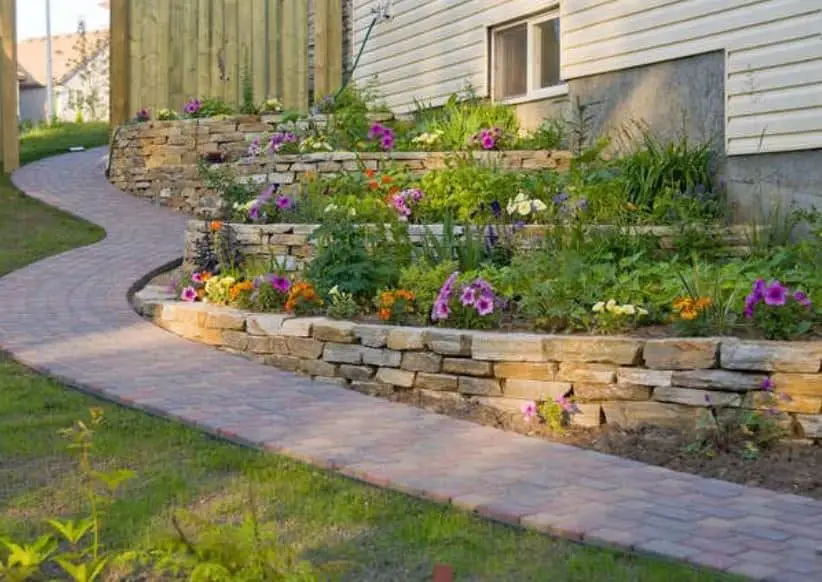If your property has a hill or slope, you know what causes soil erosion. The homeowner has several alternatives for leveling down a slope or hill, including terracing, planting a vegetative cover, and building retaining walls.

How to Prevent Slope-Related Erosion in Your Front or Backyard
If your property has a hill or slope, you are probably already aware of what causes soil erosion. The priceless topsoil is taken by wind and rain and transferred to storm drains, where it may enter rivers and degrade water quality and aquatic life. Additionally, runoff might ruin your plants and yard. It’s crucial to control erosion for both current homeowners and future generations. As indicated, the homeowner has several choices for stabilizing a slope or hill, including terracing, planting a vegetative cover, and building retaining walls. Let’s examine these choices in more detail.
How to Prevent Hillside Erosion in Home Landscape
The grade of the hill should dictate the manner of control if you’re trying to stop erosion on a slope. For instance, a mixture of groundcovers, perennials, trees, and shrubs will stabilize the slope if the gradient is 33 percent or less. The fastest method of obtaining coverage for a large area is with lawn grass. The ideal choice is non-mowing grass, such as natural buffalograss, Kentucky 31 fescue, or creeping red fescue, if appropriate for your region. If not, consider using groundcover plants like Japanese plum yew, daylilies, pachysandra, spurge, bugleweed, liriope, mondo grass, and phlox as an alternative. Contact a garden nursery or local extension agent to find out what works in your area. Add some trees and plants afterward for added interest.
Remove any weeds from the soil before planting. Then, work with compost and limestone. To prevent the germinating plants from being blown or washed away before they can take root, the area has to be fertilized and covered with an erosion control blanket. The natural materials used in the erosion blankets, such as straw and jute netting, will break down after a season.
To stop additional erosion while planting little transplants, fill the open gaps between them with small-sized bark mulch.
With erosion blankets covering the seedlings or seeds until the plants can take root, steep slope erosion management is necessary if the gradient is between 33 percent and 50 percent. Other items like big boulders, tree trunks, and straw wattles might divert water until the plants can develop.
Installing retaining walls or terracing is the greatest option if you’re looking for advice on how to halt erosion on a steep slope, particularly if the gradient is more than 50%. These landscaping solutions might offer new chances to exhibit a rock garden and change the view of the front or back yard. Landing timbers and dry stone walls are often used for retaining walls or terracing.
Contacting a specialist to guarantee structural stability if the walls need to be higher than a few feet (61 cm) is important.
A dry stream bed or a French drain are further techniques for water rerouting. Built of river rock, the dry creek bed is a surface drain surrounded by large stones to simulate a real stream.
In a rain garden or other place where it may soak into the soil, water seeps through the rocks and is directed there. The French drain is a subsurface drainage system used for heavier water flow. A gravel-filled trench is made to hold a perforated pipe. The pipe transports extra water to a secure dumping location distant from the nearby region.
Hill erosion management might be costly, but if done correctly, it is a worthwhile investment.

